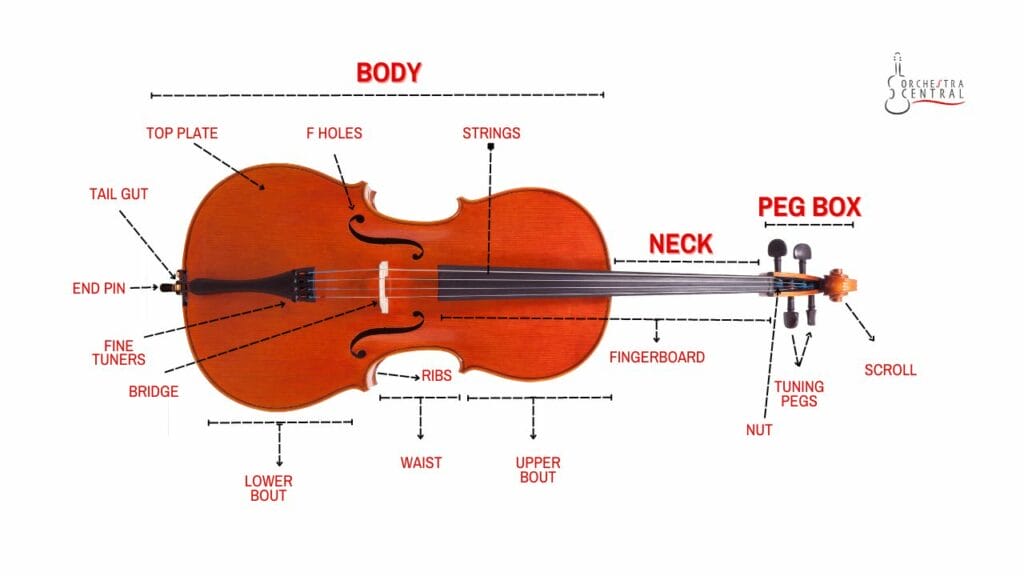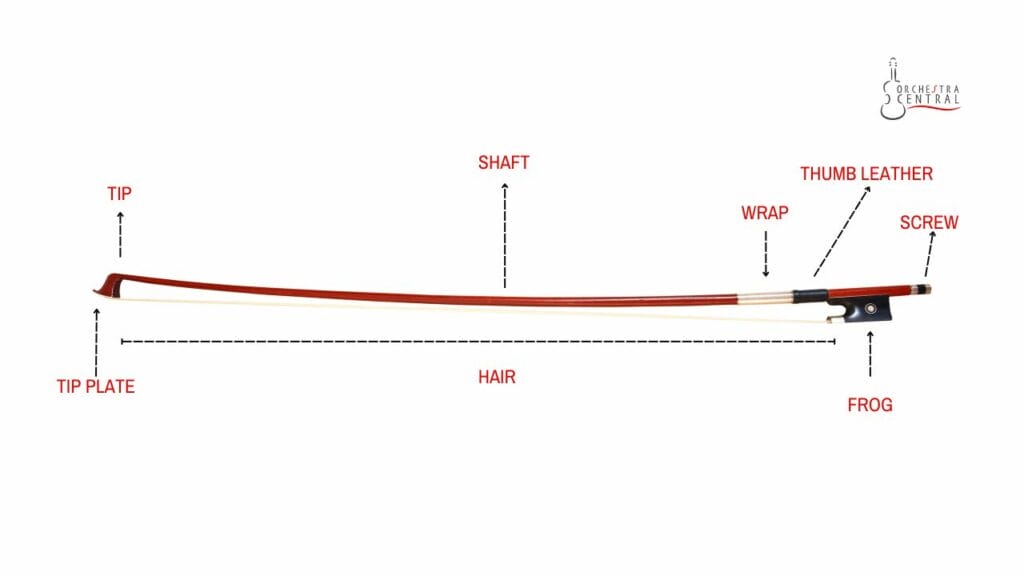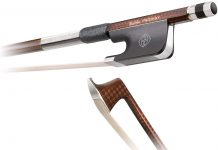The cello is famous for its deep and reverberating sound. But do you know its unique shape and design contribute to its sound? In this article, we’ll break down each cello part and how they contribute to the instrument’s sound and playability.
Anatomy of a Cello’s Body
Since the cello is part of the string family, it has features similar to its violin and viola. It has bouts, strings, scroll, tuning pegs, and many others. However, the instrument’s body is significantly larger, with a length of 30 inches or more.

However, remember that many cello brands have created unique versions of this classic instrument, each with its spectacular sound and style.
Body of the Cello
The cello’s body has different components, each with a different purpose or role. Here are the 14 parts of a cello’s body.
Top Plate
The top of the instrument is aptly called the top plat or the “soundboard.” It is made of spruce wood and develops and amplifies the cello’s sound by transferring the strings’ vibrations to the instrument’s sides and back via the sound post.
Back Plate
The back of the cello has no holes but features ribs and sides connecting it to the top plate. This part comprises a single piece of flamed or striped maple wood or two matched sections. However, some cellos may use other woods, such as poplar or willow.
Ribs
The ribs cover the sides of the cello, creating a vast resonant sound box that gives the instrument’s unique tone. Luthiers (cello makers) design the ribs with flamed or striped maple to match the back.
Waist
The waist of a cello, which is the narrowest point of the instrument, sits between the upper and the lower bout. It is comparable to the narrowest point of the human body.
Bass Bar
It is a wooden spruce strip inside the cello, running almost the entire top length. It is positioned under the bridge near the C string to improve the depth of the notes.
Bouts
Bouts are the rounded sections of the cello’s body situated above and below its waist. There are two types: the upper bout near the neck and the lower one closer to the endpin.
F Holes
The F holes, named after their shape, are openings on the top of the cello that resembles the letter F. They enhance the instrument’s resonance by allowing the vibrating air to escape the cello. F-holes are present in most modern string instruments, such as violas, violins, semi-acoustic guitars, and double basses.
Sound Post
It’s a slender cylindrical wooden piece, usually spruce, between the cello’s top and back. It sits below the bridge’s A string side and carries the sound waves from the instrument’s top to the back, creating a rich, full tone. While changing strings, it’s crucial to avoid removing them all at once as the tension holds the sound post.
Endpin Rod (Spike)
It is a lengthy metal rod placed at the bottom of the cello’s body to keep the instrument at an upright angle and for support while playing. You can elevate the cello to a comfortable playing height by loosening the endpin screw and pulling the metal spike.
Bridge
As its name implies, the cello’s bridge is a small arched piece of maple (typically flecked or spotty). It elevates the strings above the fingerboard, allowing the produced sound vibrations to travel through it to the cello’s body.
The luthiers intricately carve it, usually with a heart-shaped hole and swirls, and uses the string’s tension to hold it in place instead of glue.
Tailpiece
It is a piece of narrow, curved wood that anchors the strings at the opposite end of the pegbox. It has four round holes that secure and pulls the strings toward the endpin and saddle. While its primary function is to maintain the strings’ tension, it can also impact the cello’s sound by making it incredibly resonant.
Tail Gut
The tail gut connects the tailpiece to the endpin collar, allowing you to tighten the strings. Previously, artists used animal intestines to design them. However, today’s instruments use synthetic materials or strips of metal.
Fine Tuners
These parts are the metal screws that you find at the base of the strings on the tailpiece. They offer a more effortless turning experience than turning the pegs, thanks to their lever mechanism design. However, they may be absent on some cellos and affect the sound quality, especially on non-metal strings.
Purfling
Purfling refers to the decorative border on the cello’s top and back. It consists of two or three wooden strips inserted into the wood. In addition to enhancing the cello’s appearance, purfling protects it against cracks.
Neck
The cello’s neck is a slender piece of wood connecting the pegbox to the cello’s body. Cellists grip the neck with one hand while resting their thumb on it as they press the strings. Here are its parts:
Fingerboard
It’s a long-curved strip of wood that extends over the cello’s body. You can produce different notes by pressing down the fingerboard using your left-hand fingers. As your fingers move closer to the bridge, the pitch increases due to the shortened length of the vibrating string.
Fun Fact: The fingerboard has durable ebony or stained wood to add support to the neck and helps withstand string tension.
Nut
It is a raised strip of wood at the top of the fingerboard. It elevates the strings, allowing them to vibrate freely and produce sound. The nut contains grooves to secure the strings in place and prevent them from slipping off the fingerboard.
Additionally, it affects the cello’s action or the distance between the strings and the fingerboard. For instance, the higher the strings are from the fingerboard, the higher the action.
Strings
The cello strings run from the tailpiece at the bottom of the instrument to the top of the fingerboard near the pegbox. Every string has a different note – A, D, G, and C – with A having the highest pitch. You can play the cello’s strings in two ways: pluck them or use a bow to pull and push across the strings.
Although people refer to them as “strings,” luthiers do not make them from string but instead use materials such as metal, gut, or metal-covered gut. Historically, artists made strings from animal intestines during the Baroque and Renaissance periods, and although less common today, the term “gut strings” is still common.
Button
It sits at the end of the neck and is semicircular, connecting the cello’s neck and body. It provides a larger surface area for gluing when attaching the neck joint to the cello.
Peghead / Pegbox

It is the wooden section located above the neck and below the scroll. It contains holes where you insert the pegs. Luthiers often use the same piece of wood as the neck and scroll for the pegbox.
Scroll
The scroll sits at the top of the cello and above the pegbox. Typically crafted from maple wood, it resembles a scroll made of paper or parchment. Unlike other cello parts, the scroll is purely decorative and does not impact the instrument’s sound.
Tuning Pegs
The tuning pegs are shaped like lollipops with a flatter, rounded end and tapering shafts. These parts fit into holes in the pegbox and are usually made from ebony, the same hard, dark wood used for the fingerboard.
Each string is assigned its own tuning peg. Turning the peg tighter will increase the string tension, resulting in a higher tone. If you loosen the peg, you’ll get a lower tone.
Cello Bow Parts

Besides the cello’s body and neck, the cell bow is another essential component worth knowing.
Stick/Shaft
It is the long, thin, wooden part of the bow that you hold. Cello makers design it from Pernambuco wood or carbon fiber, fiberglass, and synthetic materials.
Winding/Wrap
It is the thread or material wrapped around the bow stick to give you a better grip. It can contain leather, silk, nylon, or metallic wire. This cello bow part often sits near the bow’s frog and can extend down toward the middle or end of the bow stick. And remember, it can affect the bow’s weight and balance, which impacts the produced sound.
Hair
It’s the long, fine, and tightly stretched bundle of horsehair that runs the length of the bow. It sits at the frog and the tip of the bow to produce sound whenever you pull it across the cello’s strings. It is advisable to rehair your bow to maintain its longevity and performance. Remember to apply rosin or wax!
Screw
As you play the cello, you can turn the screw at the bottom of the frog to tighten or loosen the bow’s hair.
Frog
It is the curved ebony piece at the base of the bow. The frog holds the bow hair and lets you adjust the hair’s tension. It also provides you with a comfortable grip.
Ferrule
It’s a metal band sitting at the end of the bow. In addition to protecting the bow’s wood against tear and wear, the ferrules add weight that helps you balance and control the bow.
Tip and Tip Plate
The tip plate is a small piece of metal located at the end of the bow farthest from the frog. It reinforces the bow’s tip and helps to protect it against damage.
On the other hand, the tip is the very end of the bow, where the hair ends. It aims to securely hold the bow hair and help guide it across the instrument’s strings. These two parts help maintain the bow’s structural integrity and performance.
Table of Contents






